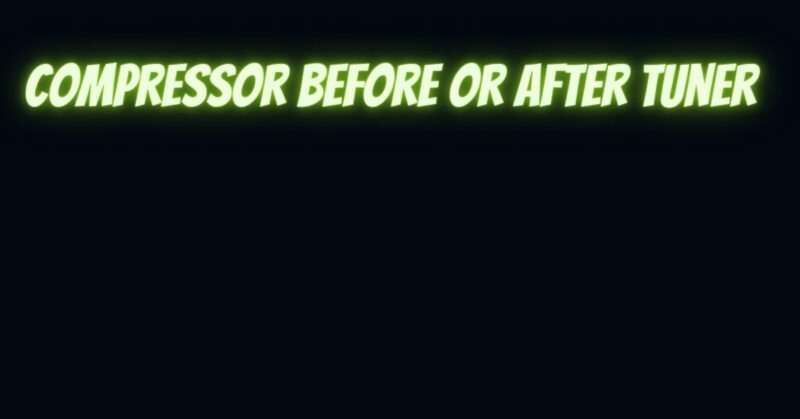In the realm of signal processing, the order of effects in your signal chain can significantly influence your overall sound and how each effect interacts with the others. The placement of a compressor and a tuner in your signal chain is a decision that can impact your tuning accuracy, sustain, and tonal dynamics. In this article, we’ll delve into the considerations, advantages, and potential challenges of using a compressor before or after a tuner, helping you make an informed choice to enhance your musical performance.
Compressor Before Tuner: Tuning Clarity and Dynamics
Advantages:
- Dynamics Management: Placing the compressor before the tuner allows it to manage the dynamics of your playing before the signal reaches the tuner, ensuring consistent input levels.
- Tuning Clarity: With controlled dynamics, the tuner receives a more stable signal, potentially leading to quicker and more accurate tuning readings.
- Sustain Enhancement: Compressing the signal before tuning can enhance sustain, providing a more sustained note for the tuner to register.
Considerations:
- Compressor Settings: Ensure that the compressor settings are subtle enough to avoid altering the fundamental pitch of the notes being played.
- Tuning Process: While a compressor can help with sustain, be mindful that extended sustain might not be necessary while tuning.
Compressor After Tuner: Enhanced Tuning Consistency
Advantages:
- Tuning Precision: Placing the compressor after the tuner ensures that the tuner reads the natural, unprocessed signal, providing accurate tuning information.
- Tonal Control: Compressing the signal after tuning lets you sculpt the tone according to your preference, without affecting the tuning process.
- Post-Tuning Sustain: A compressor applied after tuning can enhance the sustain of the tuned notes, allowing you to fine-tune sustain without affecting tuning accuracy.
Considerations:
- Tuner Interference: If your compressor introduces noise or hiss, placing it after the tuner ensures that the tuner registers the cleanest signal possible.
- Sustain Dynamics: Depending on the compressor settings, the sustain-enhancing effect might not be as pronounced as when the compressor is placed before the tuner.
Finding Your Ideal Signal Chain
Consider combining both approaches:
- Compressor Before Tuner: For situations where quick, accurate tuning is crucial, place the compressor before the tuner to manage dynamics and enhance sustain.
- Compressor After Tuner: When you’re content with your tuning and want to sculpt your tone, place the compressor after the tuner to shape the sustain and dynamics.
The decision to place a compressor before or after a tuner hinges on your tuning accuracy needs, tonal preferences, and the desired role of the compressor in your signal chain. Both approaches offer unique advantages and considerations. By understanding how each placement affects tuning accuracy, sustain, and tonal dynamics, you can tailor your signal chain to achieve the perfect balance between precise tuning and expressive tone control. Ultimately, your signal chain order should be a reflection of your musical intentions and the sonic journey you want to take your audience on.


